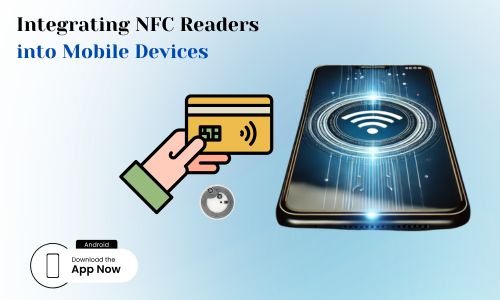Near Field Communication (NFC) technology is revolutionizing the way we interact with mobile devices. From making contactless payments to automating tasks and improving security, NFC readers are becoming an essential feature in modern smartphones. However, integrating NFC reader functionality into mobile devices comes with its own set of advantages and challenges. This article explores the benefits, potential obstacles, and practical aspects of using NFC readers on mobile devices.
Understanding NFC Readers in Mobile Devices
An NFC Reader is a short-range wireless communication technology that allows devices to exchange data when they are in close proximity. Most modern smartphones come equipped with an NFC Card Reader that enables contactless payments, ticketing, and access control. Additionally, NFC Tag Readers can scan NFC tags embedded in smart posters, business cards, and IoT devices to provide instant information.
How Do I Read NFC on My Phone?
Reading NFC tags with your phone is simple and requires minimal setup:
- Enable NFC: Go to your phone settings, search for “NFC,” and toggle it on.
- Use a Compatible App: Some phones have built-in NFC functionality, while others require an app like Google Pay or NFC Tools.
- Scan the NFC Tag: Hold your phone close to an NFC tag. The phone will automatically read the tag and display the relevant information.
For Android users, NFC is usually found under “Connected Devices” or “Wireless & Networks” in settings. iPhone users can access NFC reading via Apple Wallet or a third-party NFC reader app.
How Do I Use NFC on My Phone?
Using an NFC reader on your smartphone offers multiple functionalities, such as:
- Contactless Payments: Services like Google Pay, Apple Pay, and Samsung Pay allow quick and secure transactions.
- Smart Access Control: NFC-enabled doors and office systems allow secure entry without the need for physical keys.
- Data Sharing: Quickly share contacts, links, or files by tapping NFC-enabled devices together.
- IoT and Smart Home Integration: NFC tags can automate actions like turning on Wi-Fi, adjusting settings, or triggering smart home devices.
Benefits of Integrating NFC Readers into Mobile Devices
- Convenience and Speed
NFC readers make everyday transactions seamless. Whether you’re making a payment or sharing files, NFC enables fast and hassle-free interactions without requiring a complex setup.
- Enhanced Security
NFC technology employs encryption and tokenization for secure transactions. Unlike Bluetooth or Wi-Fi, NFC connections are short-range (typically within 4 cm), reducing the risk of unauthorized access.
- Reduced Physical Contact
Post-pandemic, contactless interactions have become crucial. NFC eliminates the need for physical cash, cards, or access keys, making it safer and more hygienic.
- Versatility Across Industries
From retail and transportation to healthcare and industrial automation, NFC readers in mobile devices support various applications, including:
- Retail: Contactless payments and digital loyalty programs.
- Logistics: Inventory tracking with NFC tags.
- Healthcare: Secure patient data access and hospital automation.
- Improved User Experience
NFC technology enhances usability, making it easier for consumers to interact with businesses through digital content, smart tags, and automation.
Challenges of Integrating NFC Readers into Mobile Devices
- Limited Range
NFC works within a very short range, typically 4 cm. While this enhances security, it can be a limitation for applications requiring broader connectivity.
- Compatibility Issues
Not all smartphones come with NFC functionality, and older models may not support advanced NFC applications.
- Security Concerns
Although NFC is secure, vulnerabilities like relay attacks and data interception still exist. Ensuring robust encryption and authentication measures is crucial.
- Adoption and Awareness
Many users are still unaware of NFC capabilities and how to use them effectively. Businesses must educate consumers to drive widespread adoption.
The Future of NFC in Mobile Devices
As technology advances, NFC is expected to become more powerful and versatile. Some future trends include:
- Integration with AI and IoT: NFC will play a key role in smart cities, enabling seamless interactions with connected devices.
- Improved Security Measures: Advanced encryption and biometric authentication will enhance NFC security.
- Expanded Use Cases: From digital IDs to smart packaging in retail, NFC applications will continue to grow.
Conclusion
Integrating NFC Readers into mobile devices offers numerous benefits, from faster transactions and enhanced security to improved convenience in various industries. However, challenges like compatibility issues and security concerns must be addressed to maximize its potential. As businesses and consumers become more familiar with NFC Card Readers and NFC Tag Readers, this technology will continue to shape the future of mobile interactions.
By understanding how to read NFC on a phone and how to use NFC on mobile devices, users can unlock new levels of efficiency and automation in their daily lives. As NFC technology evolves, its adoption across industries is set to rise, making it an indispensable tool for the future.


